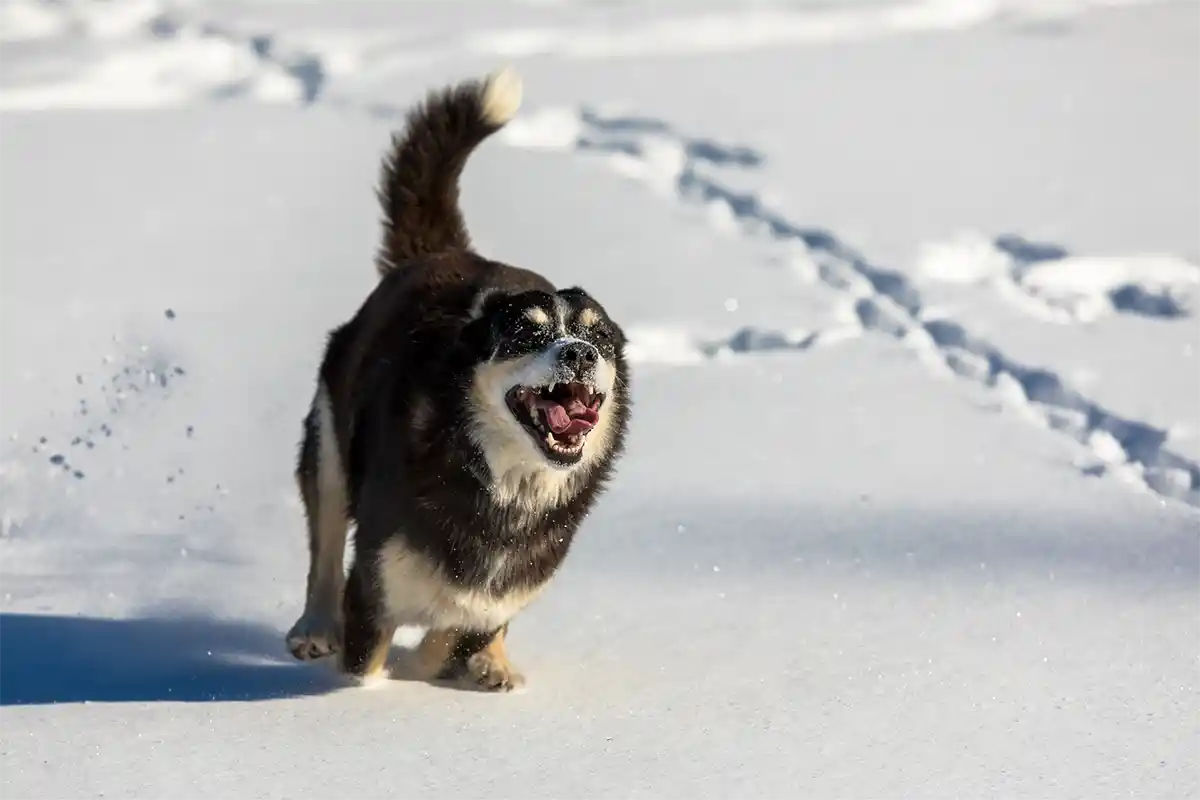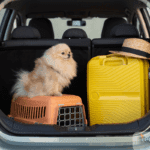Winter brings cold weather and unique risks for pets. From the toxicity of antifreeze to the hidden dangers of holiday decorations, staying vigilant is essential to protect your furry friends. This guide provides actionable steps, expert veterinary advice, and pet-safe product recommendations to ensure your pet’s safety and comfort during the chilly months.
Explore additional winter safety tips here.
Dangers of Antifreeze: Prevention and First Aid
Why Antifreeze Is a Hazard for Pets?
Antifreeze contains ethylene glycol, a highly toxic chemical. As little as a teaspoon can be lethal for cats, while a tablespoon can harm medium-sized dogs, according to the Pet Poison Helpline. Its sweet taste often attracts pets, making even small spills a severe threat. Once ingested, it rapidly causes kidney failure and can be fatal if untreated.
Each year, the ASPCA handles thousands of calls related to antifreeze poisoning in pets, highlighting its prevalence and danger.
Additional Winter Chemical Hazards
Deicers: Can irritate paws and cause gastrointestinal upset if ingested. Always use pet-safe alternatives.
Engine Coolants: Often contain propylene glycol, which, while less toxic than ethylene glycol, can still cause mild poisoning.
Read more about emergency steps for dogs.
Symptoms of Antifreeze Poisoning in Pets
- ⚠️ Lethargy: Unusual tiredness or weakness
- ⚠️ Vomiting: May occur shortly after exposure
- ⚠️ Increased thirst and urination: Notable changes in drinking and bathroom habits
- ⚠️ Seizures or tremors: Indicates severe poisoning
- ⚠️ Kidney failure: Can occur in advanced stages
“Even the smallest exposure to antifreeze can result in severe kidney damage. Prompt veterinary intervention is critical to saving your pet’s life.”
- 1️⃣ Remove Your Pet from the Source: Prevent further exposure immediately
- 2️⃣ Call Your Veterinarian: Provide details about the type of antifreeze and estimated amount ingested
- 3️⃣ Act Quickly: Early treatment, such as inducing vomiting or administering antidotes, can save lives
Safer Alternatives to Traditional Antifreeze
- Use Propylene Glycol-Based Antifreeze: These options are less toxic to pets but should still be handled carefully.
- Store Chemicals Securely: Keep all antifreeze products out of reach.
- Clean Spills Immediately: Even small amounts can be hazardous.
Switching to pet-safe antifreeze is a proactive way to reduce risks without compromising your vehicle’s performance.
Cost Comparison: Regular vs. Pet-Safe Antifreeze
| Product Type | Approximate Cost per Gallon | Toxicity Level |
|---|---|---|
| Regular Antifreeze | $10–$15 | High (ethylene glycol) |
| Pet-Safe Antifreeze | $20–$25 | Low (propylene glycol) |
Interactive Tool: Symptom Checker
Use our Symptom Checker to identify signs of antifreeze poisoning and get step-by-step guidance for immediate action.
Symptom Checker: Identify and Act
Check for signs of antifreeze poisoning in your pet and get tailored guidance for immediate care.
Step 1: Select Symptoms
Step 2: Severity of Symptoms
Understanding the risks associated with antifreeze and taking preventative measures can save your pet’s life. Ensure all chemicals are securely stored, clean up spills promptly, and remain vigilant about potential exposures during the winter months. For more winter safety advice, visit Tailwaggors’ Winter Pet Safety Guide. Prepare for emergencies with this essential guide.
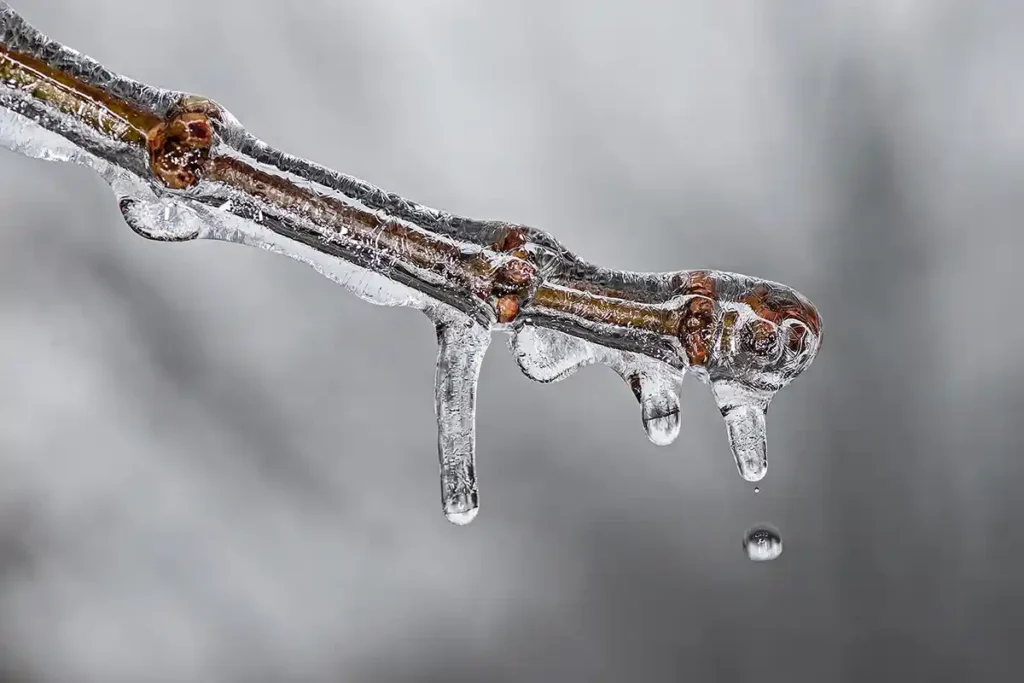
Ice Melt Safety for Pets
Common Toxic Ingredients in Ice Melts
Many conventional ice melts contain chemicals like calcium chloride and magnesium chloride, which can irritate your pet’s paws and cause gastrointestinal distress if ingested. The ASPCA highlights that prolonged exposure to these substances can lead to severe issues, including paw pad burns or ulcers. During winter walks, your pet’s paws are at high risk of absorbing these chemicals, especially in urban areas where deicers are heavily used.
Did You Know? Even a small amount of ingested ice melt can upset your pet’s stomach, leading to symptoms like vomiting and lethargy.
Symptoms of Ice Melt Toxicity
- ⚠️ Drooling: A sign of irritation or ingestion
- ⚠️ Vomiting: Indicates gastrointestinal upset
- ⚠️ Paw Irritation or Redness: Often caused by chemical burns
- ⚠️ Lethargy: A common sign of toxicity requiring immediate attention
- Rinse your pet’s paws thoroughly with lukewarm water
- Prevent your pet from licking affected areas
- Contact your veterinarian promptly
Consider using pet-safe ice melt products and protective booties during winter walks. Always wipe your pet’s paws after outdoor activities.
Pet-Safe Ice Melt Alternatives
Protect your furry friends by choosing ice melts labeled as “pet-safe.” These products avoid harmful chlorides and focus on safer ingredients. Alternatively, you can opt for eco-friendly DIY options like sand or gravel to provide traction without risking your pet’s health.
Tailwaggors Tip: Switching to pet-safe ice melt products not only protects your pets but also reduces the environmental impact on local waterways.
Interactive Table: Compare the best pet-safe ice melts for 2025.
| Product Name | Key Ingredients | Why It’s Safe | Price (Approx.) |
|---|---|---|---|
| Safe Paw Ice Melter | Urea-based | Non-toxic formula with no chlorides | $20 (8 lbs) |
| Green Gobbler Pet Safe | Magnesium chloride | Low irritation to paws and plants | $25 (10 lbs) |
| Natural Rapport Pet Friendly | Calcium magnesium acetate | Environmentally safe, biodegradable | $22 (8 lbs) |
| Snow Joe Melt-2-Go | Calcium magnesium blend | Gentle on paws and concrete | $18 (10 lbs) |
Prices are approximate and may vary by retailer. Always follow the product’s label instructions for safe use.
Read more about Cold Weather Safety Tips for Your Pets
How to Protect Your Pet’s Paws
Your pet’s paws are their first line of defense against winter hazards. Keep them safe with these tips:
- Rinse and Dry Paws After Walks: Use warm water to remove any lingering chemicals or salt.
- Apply Paw Balm: Protect against cracks and irritation with a moisturizing barrier.
- Use Booties: Invest in high-quality pet booties to shield paws from harsh chemicals and icy surfaces.
Regular paw care prevents small injuries from escalating into bigger problems, ensuring your pet stays active and happy all winter long.
Explore 12 science-backed ways to keep your pets cozy this winter for additional tips and tricks to ensure their comfort and safety.

Holiday Hazards: Decorations, Foods, and Plants
Toxic Holiday Plants for Pets
Holiday greenery like poinsettias, mistletoe, and holly bring seasonal cheer, but they can pose serious health risks to your furry companions. According to the ASPCA, poinsettias, while often considered low-risk, can cause mild gastrointestinal upset if ingested. More concerning are mistletoe and holly berries, which may result in vomiting, diarrhea, and even cardiovascular issues in severe cases.
To keep your pets safe, opt for artificial plants or place real greenery out of their reach.”
Explore a full list of toxic plants for pets.
Risks from Holiday Decorations
The sparkle of holiday decorations can be tempting for pets, but these festive items often hide potential dangers:
- Tinsel: This shiny decoration may be irresistible to cats, but if ingested, it can cause life-threatening intestinal blockages.
- Glass Ornaments: Fragile ornaments can shatter, leading to cuts or ingestion of sharp fragments.
- Electrical Cords: Curious pets might chew on cords, risking electrocution. Always unplug decorations when not in use and use cord protectors.
Secure your tree to prevent it from tipping over if your pet decides to climb or tug on decorations.
Dangerous Holiday Foods for Pets
The holiday season often means indulgent treats, but many of these can be hazardous for your pets:
- Chocolate: Contains theobromine, a compound highly toxic to dogs and cats. Dark chocolate is particularly dangerous due to its higher concentration.
- Alcohol: Even small amounts can lead to vomiting, diarrhea, and central nervous system depression.
- Fatty Leftovers: Foods like turkey skin or gravy can cause pancreatitis, a painful and potentially fatal condition.
Keep your pets happy with their own holiday-safe treats. Consider pet-friendly options like pumpkin puree or specially made biscuits.”
Choose Pet-Safe Alternatives
Opt for shatterproof ornaments and avoid using tinsel. This simple choice can prevent accidents and potential emergencies.
Create Barriers
Use baby gates or playpens to keep pets away from hazardous areas like decorated trees. This creates safe zones in your holiday-decorated home.
Educate Guests
Inform visitors about keeping dangerous foods and plants out of reach. A quick briefing can prevent accidental exposure to harmful items.
Monitor Closely
Supervise pets during holiday gatherings to prevent accidents. Your attention can make the difference between a happy holiday and an emergency vet visit.
Remember: The holidays are exciting but can be overwhelming for pets. Creating a safe environment helps everyone enjoy the festivities!
Celebrate Safely
Enjoy a worry-free holiday by taking simple precautions to protect your pets from seasonal hazards. Remember, a little planning can go a long way in ensuring your furry family members have a joyful and safe holiday season.
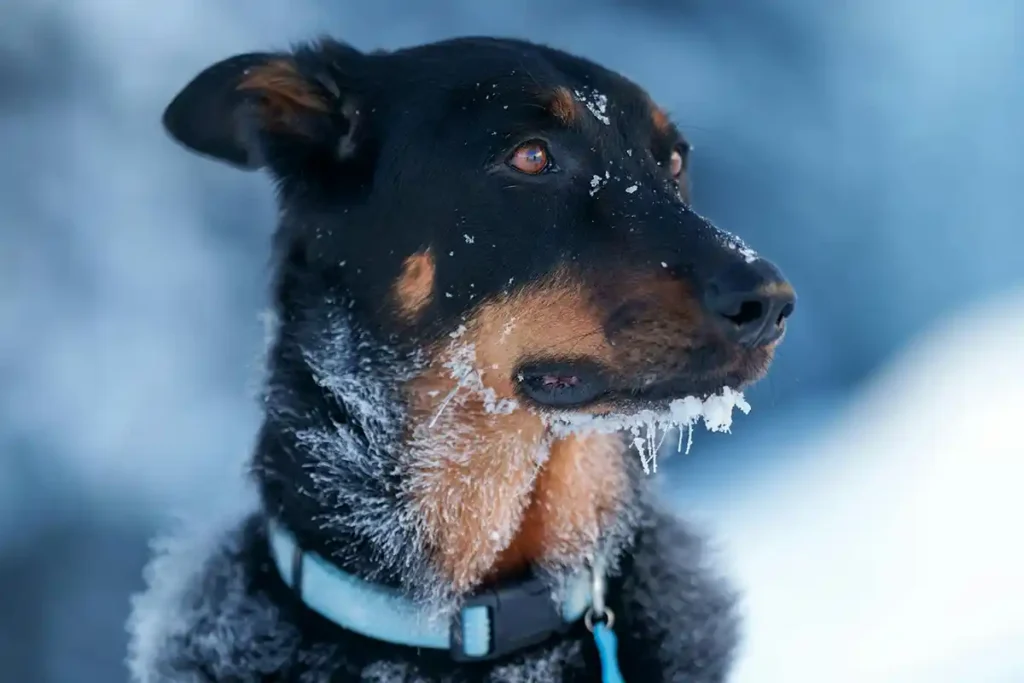
Preventing Frostbite and Cold Weather Injuries
Recognizing Frostbite Symptoms in Pets
Frostbite is a serious condition that occurs when tissues freeze due to prolonged exposure to freezing temperatures. It most commonly affects extremities such as ears, paws, and tails. According to the American Veterinary Medical Association (AVMA), frostbite can develop within minutes in sub-zero temperatures.
Did You Know?
Veterinary studies show that frostbite is most likely to occur when temperatures drop below -15°F (-26°C) with prolonged exposure.
- ⚠️ Pale or Bluish Skin: Affected areas may appear discolored due to reduced blood flow
- ⚠️ Swelling: Tissue inflammation can occur as frostbite sets in
- ⚠️ Cold, Hard Skin: A hallmark sign of frozen tissues
- 1️⃣ Move Indoors Immediately: Bring your pet to a warm, dry environment
- 2️⃣ Warm Gently: Use lukewarm (not hot) water or warm towels to thaw affected areas gradually
- 3️⃣ Contact Your Veterinarian: Severe cases of frostbite may require professional treatment
“Even mild frostbite can cause significant pain and tissue damage. Early detection and treatment are crucial to ensuring your pet’s recovery.”
– Dr. Esther Knoetze, BSc, BVSc
Winter Clothing for Pets
When temperatures plummet, jackets and booties become more than just adorable accessories—they are vital protective gear. Proper clothing can shield your pet from frostbite, hypothermia, and other cold-weather risks.
What to Look For in Winter Gear:
- Insulation: Opt for jackets with thermal lining to retain body heat.
- Water Resistance: Prevent moisture from seeping in during snow or rain.
- Secure Fit: Ensure clothing and booties fit snugly without restricting movement.
Introduce winter gear gradually to allow your pet to adjust. Use treats and positive reinforcement to make the experience enjoyable.
Check out these expert-recommended winter gear options.
Safe Outdoor Shelter Tips
Pets that spend time outdoors require proper shelter to stay safe and warm during winter. Here’s how to create a pet-friendly outdoor setup:
- Insulation: Use weatherproof materials to keep shelters warm and dry.
- Elevate Off the Ground: Place shelters on raised surfaces to prevent direct contact with cold, wet ground.
- Bedding: Line the shelter with straw or thermal blankets to retain heat.
- Windproof Design: Position the shelter away from prevailing winds or use barriers to reduce drafts.
Always check your outdoor pet’s shelter daily to ensure bedding is dry and free from ice or snow buildup.
Interactive Feature: Frostbite Prevention Checklist
Use our Frostbite Prevention Checklist to ensure your pets are safe during extreme weather. It includes steps for monitoring conditions, dressing pets appropriately, and maintaining outdoor shelters.
- Review this checklist before each cold weather period
- Keep emergency supplies readily available
- Save your vet’s contact information in your phone
By taking these precautions, you can protect your pets from frostbite and other cold-weather injuries, ensuring they remain happy and healthy throughout the winter season. For more winter safety tips, visit Tailwaggors’ Winter Pet Safety Guide.
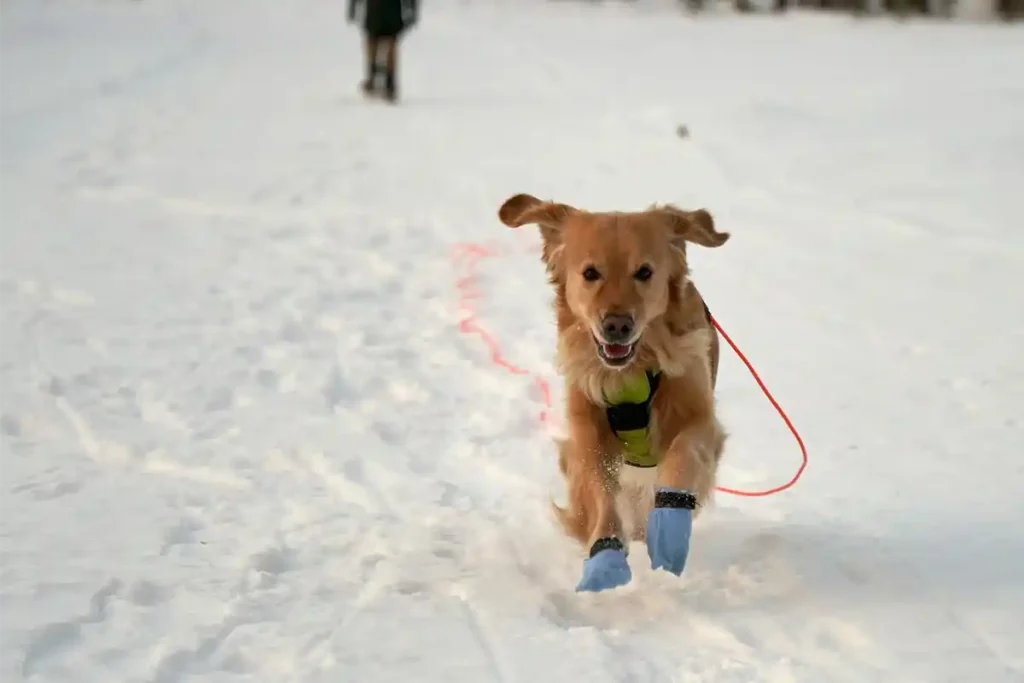
Winter Survival Kit for Pets
Must-Have Items for Your Pet’s Winter Kit
Heated Pads
Provide a cozy and warm resting spot for pets, especially for those prone to joint stiffness or arthritis.
Paw Balm
Protects against cracking and irritation caused by ice, salt, and dry air. Apply before and after walks for maximum effect.
Reflective Gear for Night Walks
Reflective collars, leashes, or vests enhance visibility during shorter winter days and evening walks.
First-Aid Supplies
Include pet-safe antiseptic wipes, bandages, and tweezers for handling minor injuries. Add a thermometer and emergency contact information for quick reference.
Regularly check your kit to ensure all supplies are fresh and functional. Replace items like paw balm and heated pads as needed to keep your kit effective.
Emergency Resources for Winter Pet Safety
Quick access to emergency contacts can make all the difference in a crisis. Keep these resources handy:
- Poison Control Hotline: Contact the ASPCA Animal Poison Control Center at (888) 426-4435 for immediate guidance in case of poisoning.
- Locate the Nearest Emergency Clinic: Use tools like the AVMA Emergency Clinic Locator to identify 24/7 veterinary services in your area.
Save these numbers in your phone and post them in a visible area at home for quick access during emergencies.
Stay Prepared, Stay Safe
Having a winter survival kit ready ensures you can handle any challenges the season throws your way. By planning ahead, you’re giving your pet the best chance to thrive, no matter how cold it gets outside. For more winter pet safety advice, visit Tailwaggors Winter Care Tips.

Frequently Asked Questions About Winter Pet Safety
- ❄️ Limit outdoor exposure during extreme cold
- 🐾 Protect paws with booties or balm
- ⚠️ Avoid antifreeze and ice melt chemicals
- 🔍 Monitor for signs of frostbite or poisoning
How cold is too cold for my pet to be outside?
+Temperature tolerance varies by breed, size, and coat type. Generally, when temperatures drop below 32°F (0°C), small breeds, senior pets, and those with thin coats should limit outdoor time. At 20°F (-6°C) or below, all pets are at risk for frostbite and hypothermia.
🩺 Expert Veterinary Tip:
“Watch for shivering, anxiety, and slowed movement – these are early signs your pet is too cold.” – Dr. Esther Knoetze, BSc, BVSc
What winter gear does my pet really need?
+Essential winter gear includes:
- Insulated, waterproof coat (for short-haired breeds)
- Paw protection (booties or paw balm)
- Reflective gear for low-light walks
- Warm, elevated bedding for outdoor time
🐾 Tailwaggors Tip:
Introduce new gear gradually and use positive reinforcement. Many pets need time to adjust to wearing boots or coats.
How can I protect my pet from winter chemicals?
+- Use pet-safe ice melt products around your home
- Wipe paws after walks to remove chemicals
- Store antifreeze securely and clean spills immediately
- Consider protective booties for walks
🩺 Expert Veterinary Tip:
“Even pet-safe ice melts can cause irritation. Always rinse and dry paws after exposure.” – Dr. Esther Knoetze
What are the signs of hypothermia in pets?
+Watch for these warning signs:
- Intense shivering, followed by no shivering
- Lethargy or weakness
- Shallow breathing
- Disorientation
- Pale or blue gums
🩺 Emergency Warning:
If you notice these signs, warm your pet gradually and seek immediate veterinary care.
How can I keep my indoor pet active during winter?
+Try these indoor activities:
- Interactive toys and puzzle feeders
- Indoor agility courses
- Hide-and-seek games
- Treadmill training (with proper introduction)
🐾 Tailwaggors Tip:
Rotate toys weekly to maintain interest and prevent boredom during extended indoor periods.
- • Keep Emergency Numbers Handy: Have your veterinarian’s contact information and a poison control hotline readily available. This quick access to professional help can be crucial during winter emergencies.
- • Provide Reflective Gear: Use reflective collars or leashes for evening walks to enhance visibility. With shorter winter days, this extra safety measure helps protect both you and your pet during low-light conditions.
- • Stay Active Indoors: Offer toys and activities to keep your pet physically and mentally stimulated during long indoor periods. Indoor exercise helps maintain your pet’s health and happiness during cold weather.
Conclusion
Winter can be a magical season for you and your pets, but it comes with unique challenges. By understanding potential hazards and taking proactive steps, you can keep your furry friends safe and comfortable throughout the cold months. From protecting against antifreeze poisoning and ice melt toxicity to preventing frostbite and navigating holiday hazards, being prepared is key to a worry-free winter.
Remember that each pet’s tolerance for cold weather varies based on their breed, size, age, and health conditions. Stay vigilant, monitor your pet’s behavior, and don’t hesitate to contact your veterinarian if you notice any concerning symptoms. With proper preparation and care, you can create a safe winter environment that allows your pets to enjoy the season alongside you.
Share Your Winter Pet Care Experience!
Have you faced winter challenges with your pets? Share your experiences, safety tips, and cold-weather success stories in the comments section below. Your insights could help other pet parents navigate the winter season more confidently.
Connect with us on social media for expert winter care advice, seasonal safety updates, and heartwarming stories from our pet community. Contact Tailwaggors or subscribe to our newsletter for the latest pet care tips.
🐾✨ Discover new ways to keep your pets cozy, happy, and healthy during the chilly months.
Share this guide with other pet lovers and exchange your best winter care hacks. 🐶❤️


